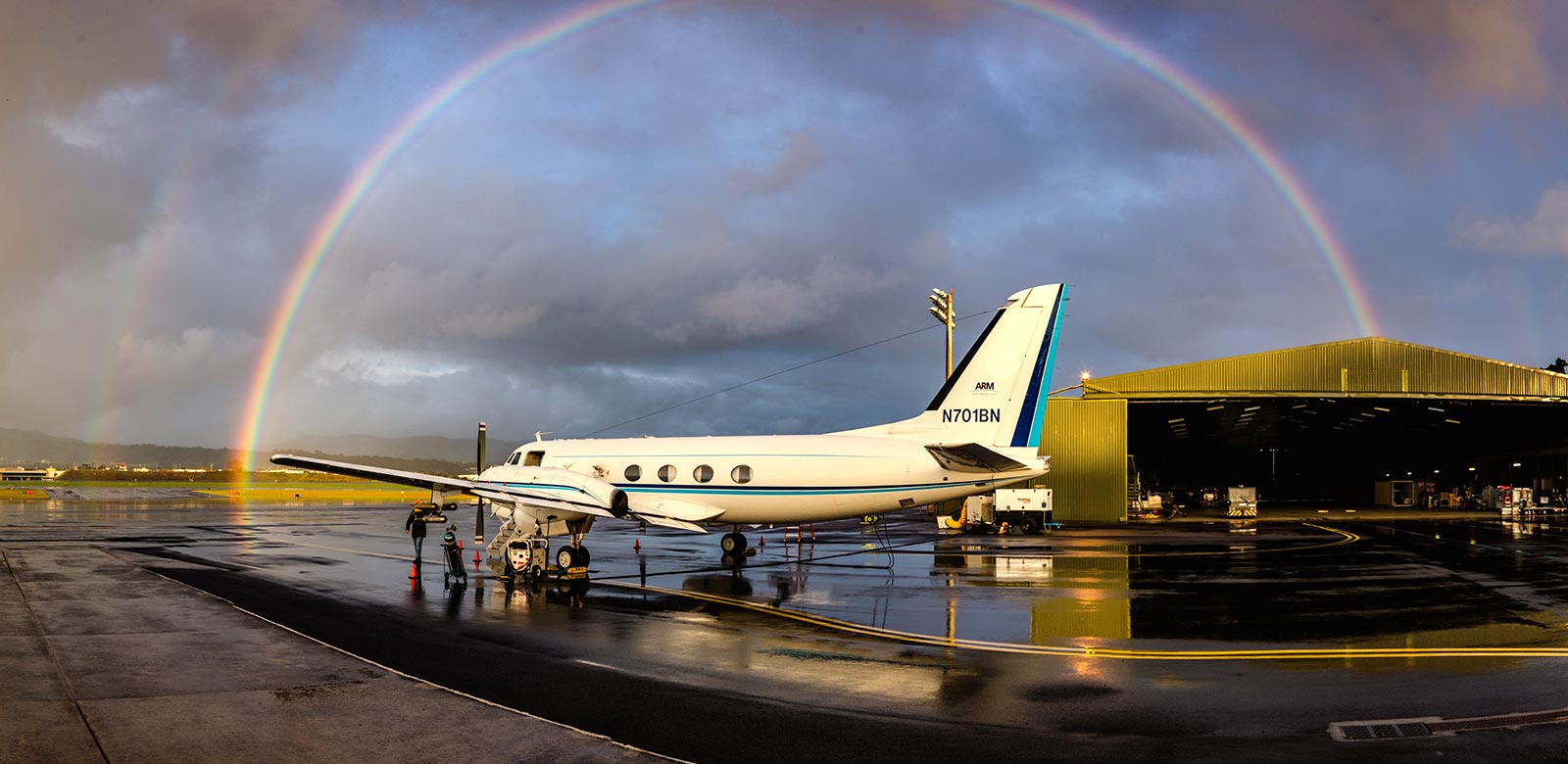
Where Atmosphere Meets Innovation
Environmental scientists at Brookhaven Lab are looking to the skies, advancing technology and conducting research to learn about the mysteries of the atmosphere and its interactions with the Earth's surface and society. This includes work to develop new sensing and laboratory systems that provide unprecedented resolution and insight into clouds, aerosol particles, and atmospheric circulations driving impactful weather, water availability, and air quality. Our data and its analysis help to improve the models used to predict atmospheric processes across a variety of timescales — from minutes to months — and the daily atmospheric conditions that impact energy demand and availability.
Environmental Science News
Aerosols, Clouds, and Atmospheric Dynamics
Critical drivers of extreme weather, water availability, and other phenomena of societal relevance
We conduct research on some of the most significant drivers of impactful phenomena: aerosols and the clouds and precipitation that form around them. Our researchers develop innovative technologies and analysis methods to measure and model aerosol and cloud properties and processes and their evolution in the atmosphere. These efforts enhance prediction accuracy, support critical infrastructure resilience, improve national security, and inform strategic planning and technological advancement in sectors ranging from defense to energy. Additionally, our work improves insights into daily atmospheric conditions, optimizing energy reliability and resource management.
Capabilities:
- Next-generation instrumentation & measurement science
- Developing and leading large-scale field campaigns
- Advancing state-of-the-art laboratory facilities
- Harnessing AI & machine learning to unlock maximum data potential
- Designing advanced experimental protocols for atmospheric motion tracking
- Enhancing data-model fusion for breakthrough predictive accuracy

Gulfstream research aircraft sits on the tarmac on Terceira Island during the Aerosol and Cloud Experiments in the Eastern North Atlantic winter 2018 intensive operation period in the Azores. Image courtesy of the U.S. Department of Energy Atmospheric Radiation Measurement (ARM) user facility.





